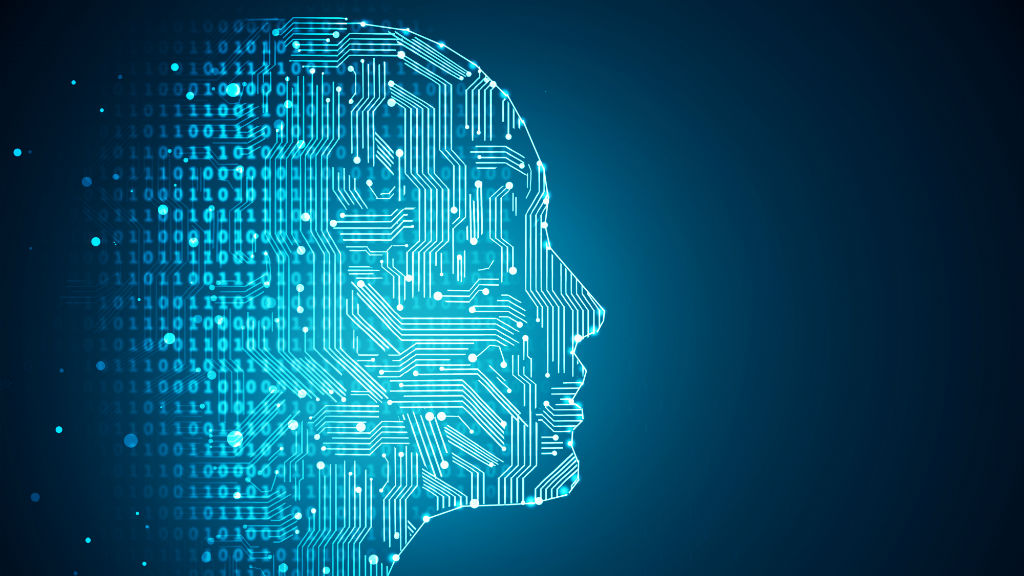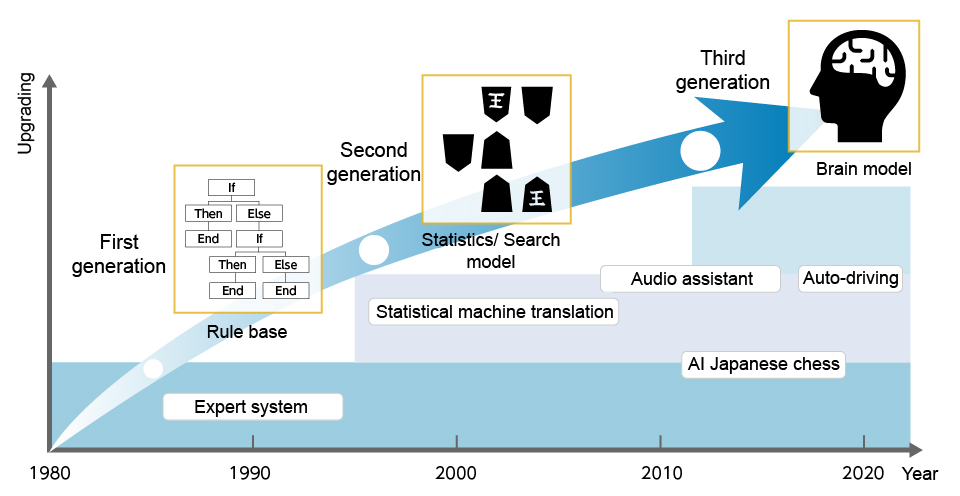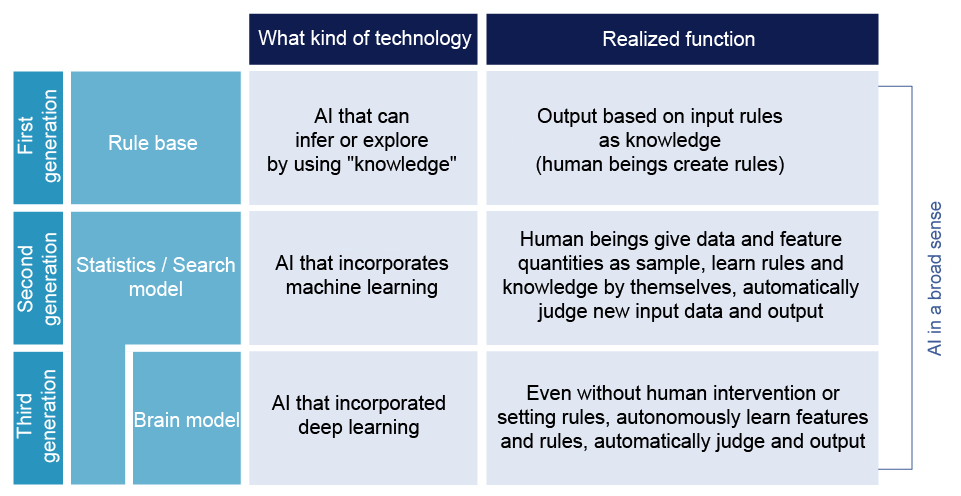What is AI?
One of the most noteworthy technologies now is Artificial Intelligence (AI). In general, AI is understood in the sense that “artificially reproducing various perceptions and intelligence realized by people”.
However, in practice, there is no certain definition of AI. It is an area that is still being discussed in various fields from computer science, cognitive science, medicine, psychology, and even philosophy.
09/10/2018
How should we understand the “Artificial Intelligence (AI)”?
Combine methods from the first to the third generation in the right place, and seamlessly integrate with mobile, wearable, IoT, analytics (statistical analysis) and other systems.

AGI (Artificial General Intelligence) does not exist yet
The biggest misunderstanding of AI is “There is already a smart AI that can solve any problem (answer any problem)”. The current AI cannot understand all things especially human cognitive abilities, common sense, or emotions, etc. There is no AI that “can do anything” existing.
It is a great goal for researchers to realize a general AI that can deal with some subjects, and actually various ideas have been proposed. However, no key breakthrough has been found. It means AI is still evolving.
To demonstrate the ability to surpass the human beings in specific areas
Of course, this does not mean that the current AI has not reached the practical level. It is said that there is no general AI that can do anything, but there are also cases where AI’s outstanding ability is far superior to humans’ limited in specific areas. For example, in the medical world, AI that can make diagnosis beyond the average doctor has appeared. In the financial field, it is said that algorithmic transactions that conduct ultra-high-speed and high frequency trading are carrying out more than half of the market transactions.
Deep learning significantly improves the accuracy of AI
AI went through the “second generation” that finds the optimal solution by statistical / search model from the “first generation” that supports human intellectual work by applying rule-based expert knowledge, and now it is shifting to the "third generation" which dramatically improves recognition performance based on brain model.
In recent years, AI has got attracted attention rapidly exactly due to the emergence of this third generation technology. A method called “deep learning” which is an algorithm based on the human brain nerve circuit is a representative of it. As in a conventional machine learning, even if the data scientist does not design the feature amount *, the computer itself reads out a huge amount of data and finds features such as rules and correlations hidden. By making inductive inferences just like humans, it will autonomously discover “meanings” and “concepts”. In addition, it will continue to learn continuously, and will refine wisdom.
The accuracy of AI has greatly improved by deep learning.
- *It is useful information for identifying and predicting things / events etc. And it is set up by selecting from data items or combination from multiple data items.

Utilize diverse methods of various AI generations in the right place at the right time

However, the third generation AI is not simply superior to the first generation AI. The optimal method differs depending on your purposes and applications.
Let's think about AI Shogi (Japanese Chess) which has become a hot topic recently as an example. In order to anticipate and make brilliant moves surprising the opponent, we need machine learning and deep learning techniques. However, to make AI memorize the basic rules and the standard moves, it is much more efficient to register a rule base from the beginning than to make it learn especially.
We can combine methods from the first to the third generation in the right place, and seamlessly integrate with mobile, wearable, IoT, analytics (statistical analysis) and other systems, in order to design the solution for a variety of business challenges in further. It is how to advance and utilize AI in future business.
It is the way how AI is required for business, to combine not only the second generation or the third generation mechanism but also the rule-based mechanism of the first generation.
You may also like
NTT DATA's Approach



